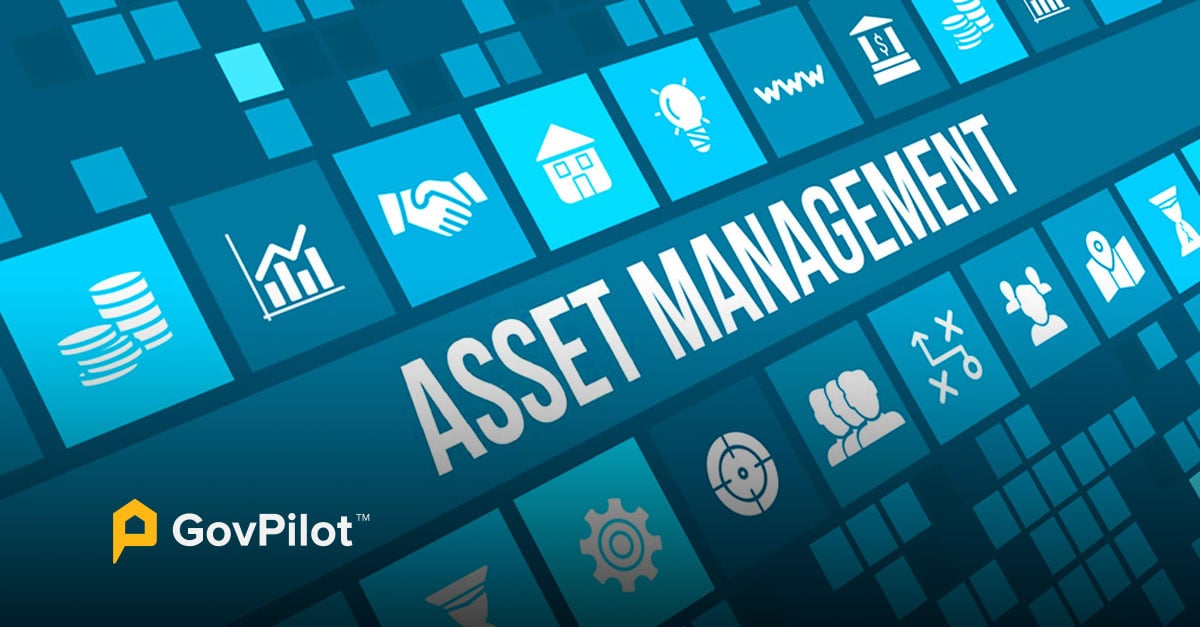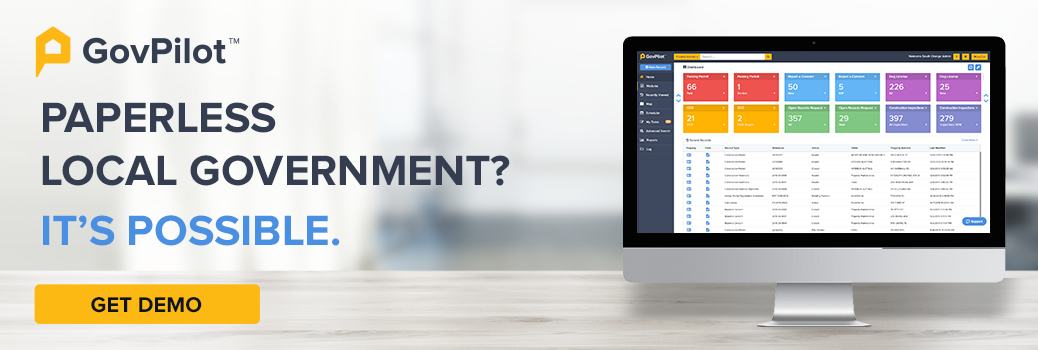Managing local government assets is an essential part of efficient government operations and maintaining community safety. From buildings and land to emergency vehicles and equipment, local governments have many assets to maintain. Proper asset management can help local governments avoid poorly planned budgets, higher deferred maintenance costs, and slow emergency response times.
In this article, we’ll discuss the types of assets under local governments' purview, why local governments need an asset management strategy, and how technology can help local governments improve asset management.
What is Asset Management in Local Government?
Government asset management is the process of acquiring, operating, maintaining, and disposing of county and municipal owned property in the most cost-effective and efficient manner possible. Good asset management involves being a good steward of taxpayer dollars by maximizing the useful life of assets, protecting them from loss, and ensuring assets are in good condition.
Local governments need a strong asset management strategy to ensure assets are managed correctly and operating as efficiently as possible.
Types of Assets Managed by Local Governments
Local governments have many different types of owned assets they are responsible for acquiring and maintaining. Depending on their role, government departments may have entire fleets of vehicles to track or government owned land to upkeep.
Other types of assets include:
- Equipment and machinery
- Buildings
- Utility fleets
- Emergency vehicles
- Land
- Physical & digital infrastructure
Each of these assets require regular maintenance to make sure they function correctly and can be available at any given time. Equipment and machinery can include anything from lawn mowers to snowplows, and require regular maintenance to keep them running smoothly. Buildings need to be maintained to ensure that they are safe and functional, and utility fleets and emergency vehicles need to be in good condition to respond quickly to community needs. Land and infrastructure are essential assets that need regular inspections to maintain public safety.
Here are specific Tips for Managing a Local Government Vehicle Fleet.
Why Local Governments Need an Asset Management Strategy
An asset management strategy can help local governments streamline workflows, keep accurate records, be more responsive to community needs, and respond quickly to emergencies and weather events.
-
Improve efficiency
Operational efficiency is improved when workflows are streamlined and accurate records are kept. Following an asset management strategy allows local governments to make better, more informed decisions, because information and data is organized and available. By maintaining accurate records of all assets and their maintenance schedules, local governments can prevent unnecessary downtime and ensure that all assets are functioning correctly.
Here are Key Tips for Mastering Government Scheduling.
-
Ensure accuracy
Accurate records from an asset management strategy also help with budgeting and capital planning, ensuring that local governments can afford to maintain their assets properly. An asset management strategy ensures accuracy in budgeting and capital planning by tracking asset condition and projecting maintenance and replacement costs.
Consider these other Government Budgeting Planning Tips for accurate budget reporting / management.
-
Increase transparency
Transparency is increased when data is easily accessible and available. Data accessibility allows local governments to be more accountable to taxpayers and ensures that they are operating with the highest level of transparency possible. By maintaining accurate records of all assets, local governments can provide data to the public and auditors, ensuring that all assets are accounted for and that taxpayers' money is being spent efficiently.
Explore How Public Records Technology Helps Make Data Accessible.
-
Promote responsiveness
Local government responsiveness is improved when departments can quickly respond to community needs and emergencies. An asset management strategy helps ensure that assets are in good condition and that they are being maintained correctly, enabling local governments to respond quickly when needed.
What to Include in a Local Government Asset Management Strategy
When developing a government asset management strategy, there are several key elements municipalities should include. An effective asset management strategy should include an inventory of all assets, a risk assessment, a needs inventory, a plan for projected maintenance and replacement costs, and the performance metrics and goals that will be used to measure progress.
1. Inventory of assets
Local governments should inventory their assets on a regular and continuous basis. This asset inventory should include every asset that a local government has under its purview. The condition of assets should also be recorded to document their useful life span. While each department should maintain a list of its assets, local government leaders should assign asset management responsibility to someone with decision-making capabilities.
GovTip: Asset inspections can be filed digitally via a mobile government field device and automatically stored and accessible to government officials in the government cloud with GovPilot.
2. Needs inventory and assessment
Developing a needs inventory may involve gathering information from departments through surveys, interviews, and other government communications strategies. The intent is to identify all departmental assets and if there are assets desired or needed by a particular department.
After the needs inventory is complete, local governments should analyze the data to identify gaps between available resources and the needs of the organization. Conducting a needs assessment can help identify any assets that need to be replaced or upgraded, and prioritize an acquisition strategy.
3. Risk assessment
Local governments should also conduct a risk assessment to identify any potential risks associated with each asset. This will help in the DPW’s strategy for prioritizing maintenance and replacement efforts. Risks may include natural disasters, such as floods or earthquakes, as well as human-caused threats, such as theft, cyber attacks, or terrorism.
Evaluate the probability that a particular threat will occur and what the potential consequences are for each threat, including any financial losses, damage to property or equipment, or harm to personnel.
By conducting a thorough government risk assessment, your public officials can take appropriate steps to mitigate or eliminate those risks, which may involve implementing security measures, developing emergency plans, or investing in insurance or other risk management tools.
Here are tips for mitigating against common natural disasters:
- Disaster Preparedness Strategy for Local Governments
- What is Disaster Resilient Infrastructure? Everything to Know
- Local Government Wildfire Mitigation & Disaster Planning Strategy
- Local Government Winter Storm Mitigation & Disaster Planning Strategy
- Local Government Flooding Mitigation & Disaster Planning Strategy
- Local Government Earthquake, Landslide, & Mudslide Disaster Planning Strategy
- Local Government Tornado Mitigation & Disaster Planning Strategy
4. Maintenance and replacement plan
Developing a maintenance and replacement plan involves estimating the future expenses associated with maintaining and replacing local government assets over the asset’s entire lifespan. Projecting maintenance and replacement costs allows localities to plan and budget accordingly to avoid costly deferred maintenance, while maintaining a high level of service.
To project maintenance and replacement costs, organizations typically use data on asset age, condition, and historical maintenance and replacement costs. This government data can be used to estimate the expected lifespan of an asset, and the expected costs associated with maintaining or replacing it over that lifespan. Organizations may also use these projections to develop a long-term capital improvement plan.
5. Performance measures
It’s important for local governments to know whether their asset management strategy is effective. Defining municipal performance metrics, or key performance indicators (KPIs), can help localities track progress over time. Metrics could include asset utilization rates, maintenance completion rates, and cost savings achieved through effective asset management.
How Government Technology Can Help with Asset Management
Government software can help with asset management by providing digital documentation storage for asset records, budgeting and financial management tools, asset tracking, automation of maintenance scheduling, and online work orders to enhance accountability.
- Digital documentation storage consolidates asset records into one system, making it easy to keep track of all assets and maintenance records. Because these records are stored in the cloud, records are updated in real-time and can be accessed by officials from anywhere.
- Budgeting and financial management tools can help local governments budget for maintenance and replacement costs accurately. This is key to being a good steward of taxpayer dollars.
- Asset tracking enables local governments to keep track of all assets in one place. Tracking assets with the use of government technology also creates valuable data insights to help better decision-making. Leadership can learn more about where assets that were recently purchased are in the supply chain, and how existing assets have been / are currently being maintained.
- Automation of maintenance scheduling makes it easy to schedule maintenance tasks and ensure they are completed on time and on budget. This simple automation tool is a key component of how public works software can help local governments avoid deferred maintenance costs.
- Online work orders ensure all maintenance tasks are tracked and completed in a timely manner. Streamlining work orders in one system cuts down on burdensome administrative tasks and follow-up and provides accountability amongst the department.
Use Local Government Asset Management Software to Manage Municipal Fleets
Local government asset management software can be a powerful tool for managing municipal vehicle fleets. By leveraging the latest technology, local governments can improve the reliability and performance of their fleets, while reducing costs and maximizing efficiency.
To learn how GovPilot can help optimize your local government asset management process, book a free demo.
Municipal Asset Management FAQs
What is Municipal Asset Management?
Municipal and county asset management is the process for acquiring, maintaining, and replacing government assets such as buildings, vehicles, land, broadband Internet infrastructure, streets, and other key property belonging to the locality.
A strong asset management strategy for governments involves taking an inventory of assets, assessing future assets that need to be acquired, regularly maintaining assets, and considering risks that put government assets in danger.
What is Government Asset Management Software?
Government asset management software moves all department of public works processes pertaining to asset maintenance and management to an online capacity. Inspection workflows can be moved to a tablet and stored in the cloud. Automated notifications for scheduling of maintenance and inspections will be sent to relevant DPW officials. A database of all existing records pertaining to a particular asset can be accessed in a few clicks or from a 3D GIS map.
Read on:
- Local Government Accountability: Operating a Truly Ethical Local Government
- Actionable Tips for City Managers and Administrators
- Local Government Community Safety Strategy
- How Local Governments Can Encourage Civic Engagement
- Continuity of Government: Government Procedures During a Crisis
- Government Cybersecurity: How to Prevent Ransomware Attacks
- Government Data Breach Examples & Prevention
- Municipal Planning: Reclaiming Your City Streets
- Local Public Space Planning
- Forming Local Government Mission Statement, Values, & Goals
- Local Government Agriculture Management Strategy







